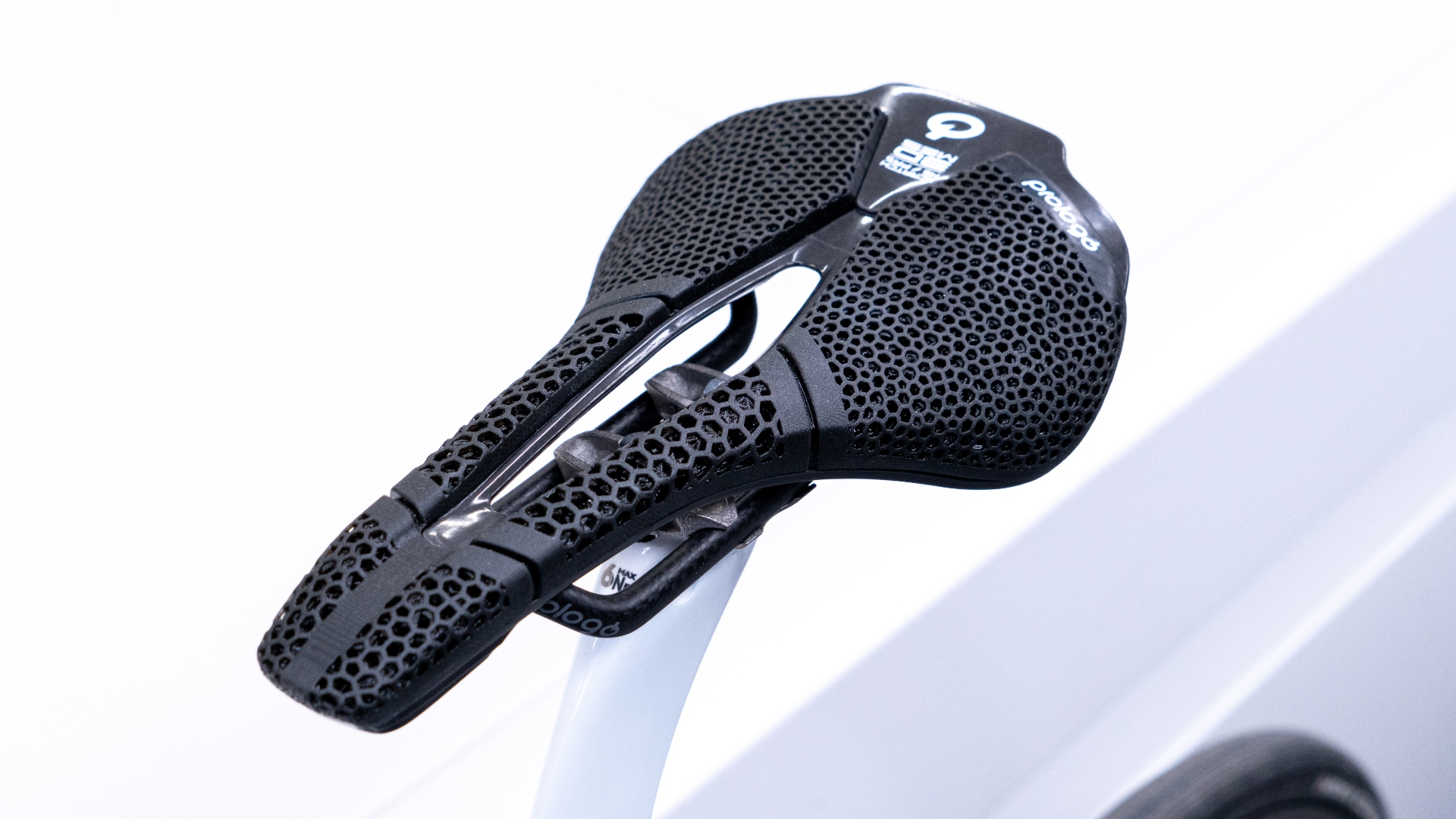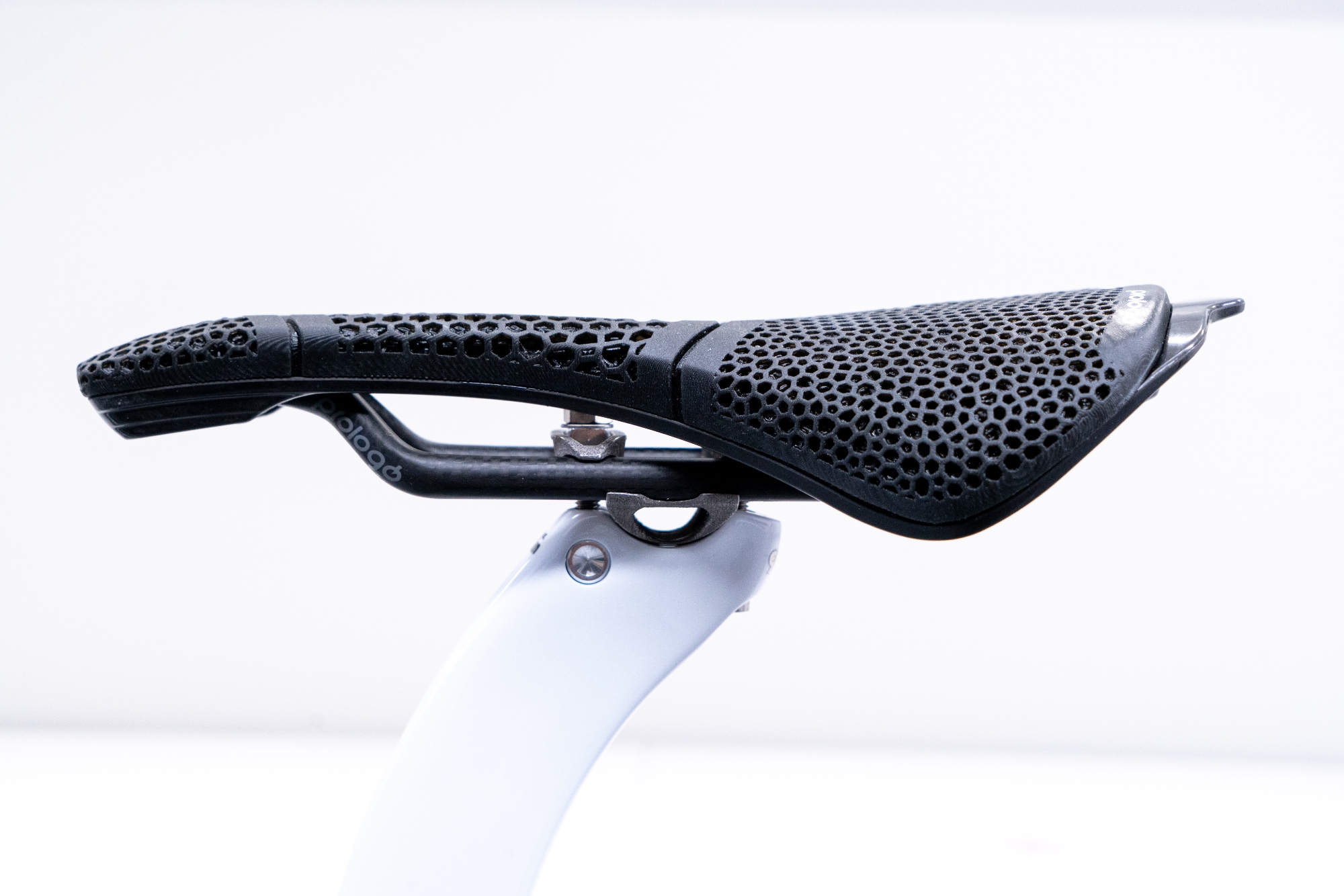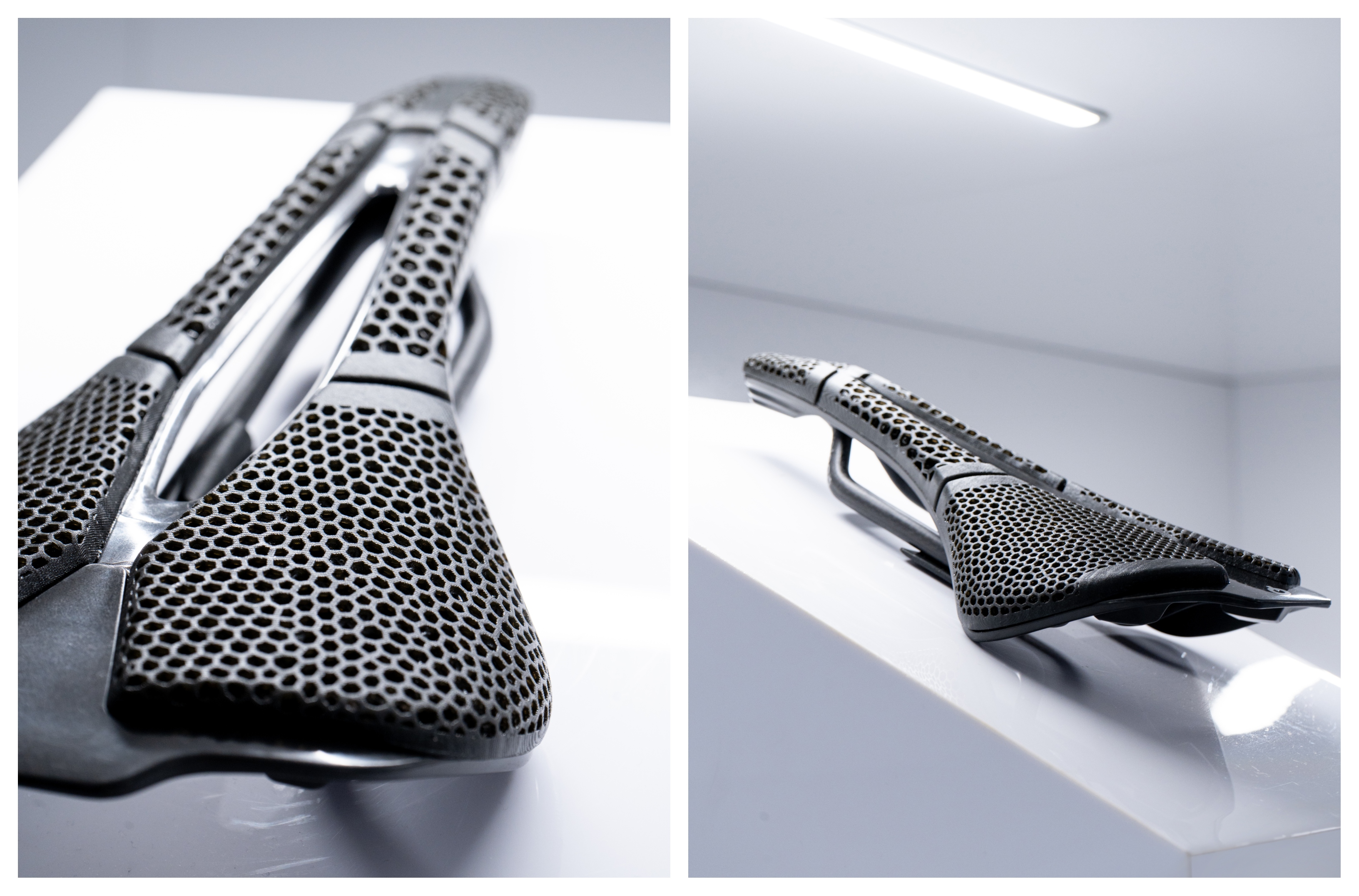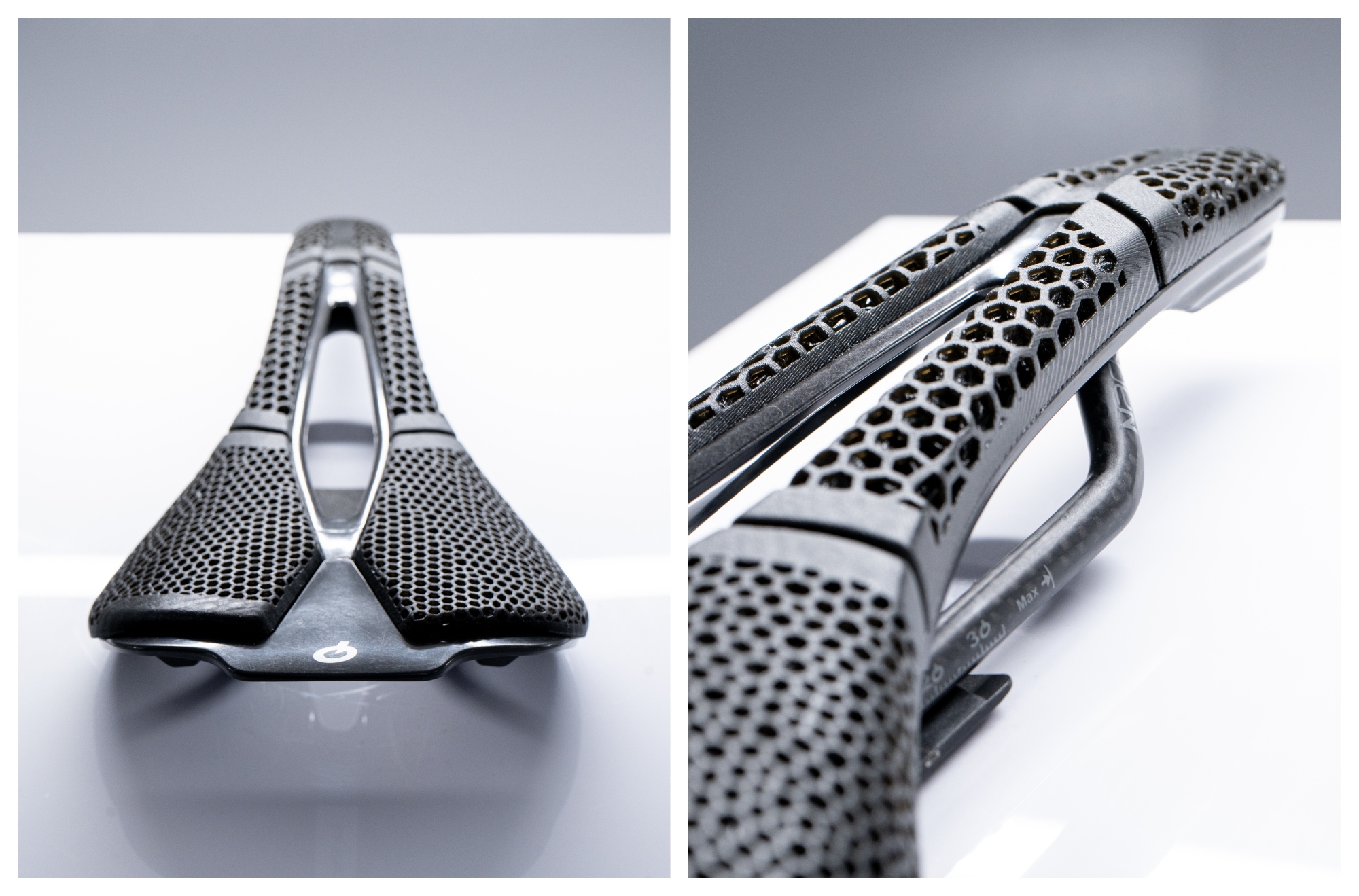
Prologo has released an updated version of its WorldTour proven saddle, the Scratch M5 PAS.
The 3DMSS model features the same shape that’s favoured by riders such Jonas Vingegaard, Egan Bernal, Sepp Kuss and Romain Bardet but now uses 3D printing to create a cover that Prologo says is designed “to adapt perfectly to different pressure areas and ensure maximum performance during all phases of pedaling”. To achieve this, the Italian brand says it analyzed test results from professional and amateur cyclists.

The cover is made from separate double-layer sections, what Prologo calls its Multi-Sector System or MSS. It’s already used in the 3D version of the Nago R4 saddle and uses that printing process to create three sectors at the front, rear and central area of the saddle - and it’s here that things start to get technical.
Each of these sections uses an upper and lower layer, with different geometric shapes and densities. The medium density front section uses Voronoi shapes on the surface and Kagome patterns near the base, which are used to provide support when riding on the tip of the saddle. The high density rear also uses Voronoi shapes on the surface but pairs these with a rhomboid shapes towards the base, with the combination designed to better support the ischial bones that form the lower part of the pelvis as well as aiding the pulling phase of the pedal stroke. Lastly, the lower density central section again uses Voronoi geometric shapes on the surface and tetrahedral shapes near the base to offer maximum comfort where the soft tissues rest.

Alongside the MSS sections, the M5 PAS 3DMSS saddle also adopts Prologo’s PAS technology. Standing for Perineal Area System, it’s an open channel that’s designed to reduce pressure and numbness.

As mentioned, the shape remains unchanged, which means an ergonomic T-shape with compact dimensions measuring 250 x 140 mm. Like all Prologo saddles the base is made from long-fibre carbon, which is chosen for its weight, rigidity and compliance. There’s a choice of two rails, the Nack and the Tirox. The former is made from carbon with aluminium filaments added, while the latter is made from light alloy steel. The difference in claimed weights for the two versions is 176g compared to 209g.
Naturally there’s a difference in price too, with the Nack rail M5 PAS 3DMSS priced at €390, while the Tirox costs €290. Both versions will be available from May onwards.






